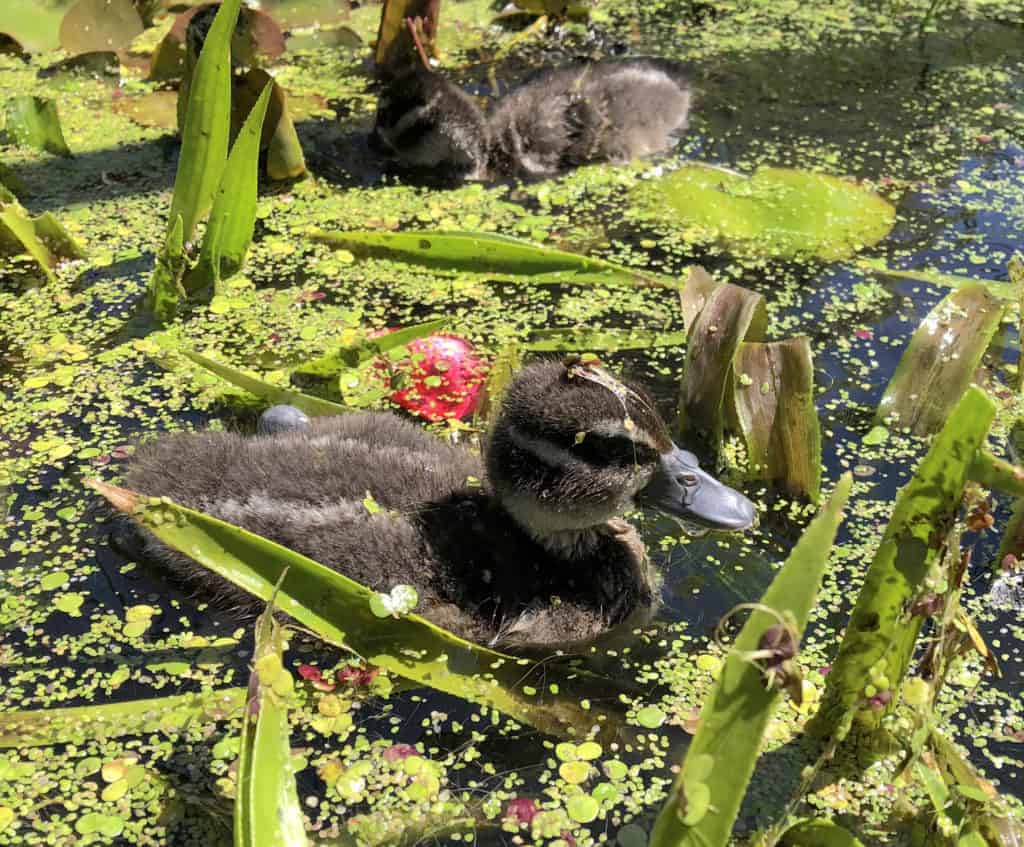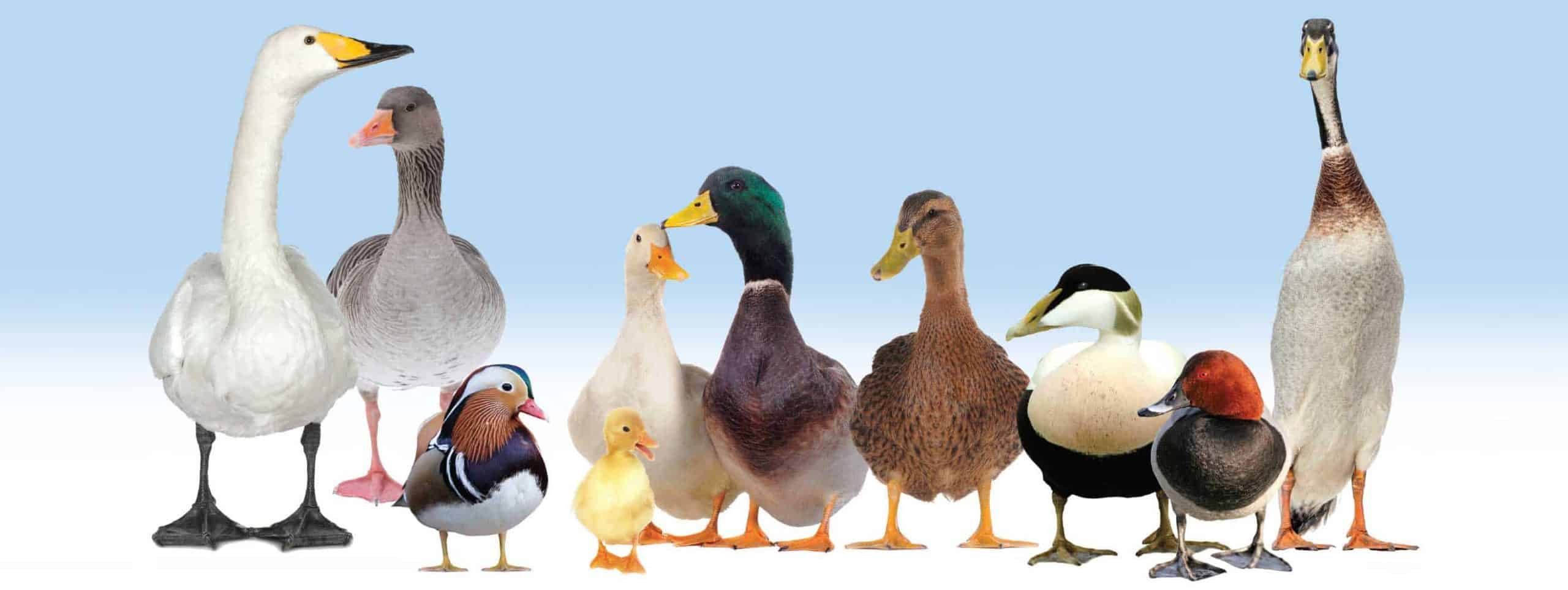Planting for Natural Ponds
The main priority when keeping heavy domestic ducks and geese must be to maintain sufficient grass. A few geese about the place can certainly help to keep the grass down. If your flock are destined for the festive table, overgrazing in the winter is not so much of an issue. But what if you want an ornamental area to look attractive with the waterfowl? As a general rule, if the grass in a bird enclosure does not require cutting in the summer, then you are perhaps over-stocked with birds. The fine green baize at the water’s edge will be mud by spring. A suitable resilient grass mixture will depend on your individual situation but recommended varieties to include when sowing are perennial rye grass, cocksfoot, fescues, timothy and white clover. A paddock mix can be very cost-effective for large areas, though not so suitable for gardens.
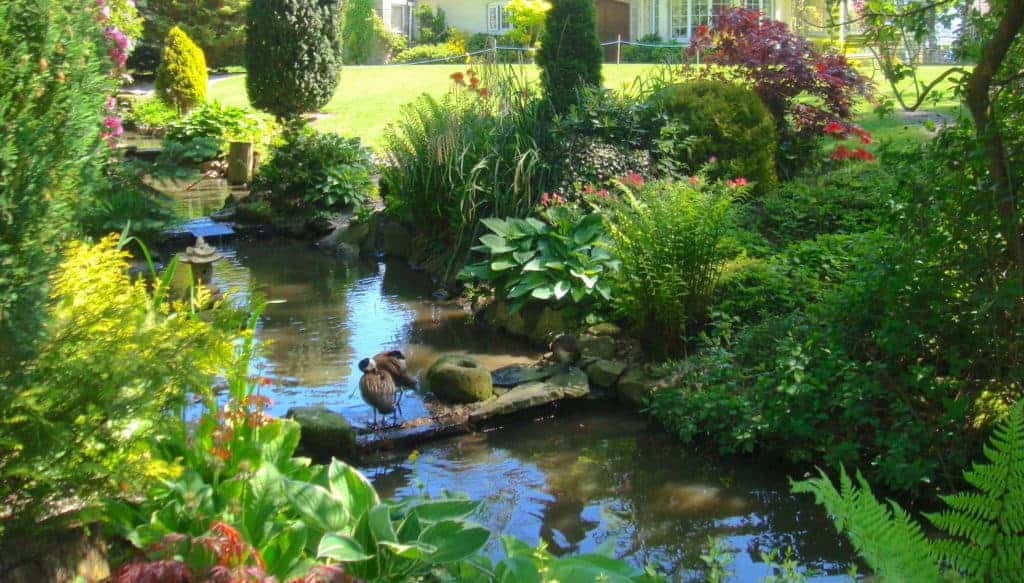
Ponds will require suitable reinforcement around the edges. This will serve to prevent banks being eroded away, stop mud around the area becoming a problem and protect the roots of surrounding plants. Stones, concrete or timber containment will be required if the shape of the pond is to stay constant. Gravel around the perimeter helps to prevent erosion. Other substrates could include shells or broken slate. Whatever you choose, remember that web-footed workers will dibble and re-distribute your careful placement. Wood chips are generally not advised as these harbour disease and fungal spores as they start to decompose.
All plants introduced to your pens will be investigated by your birds, so it is best to avoid poisonous plants. There is a list in the sidebar (at the foot of this page if you are viewing on a mobile).
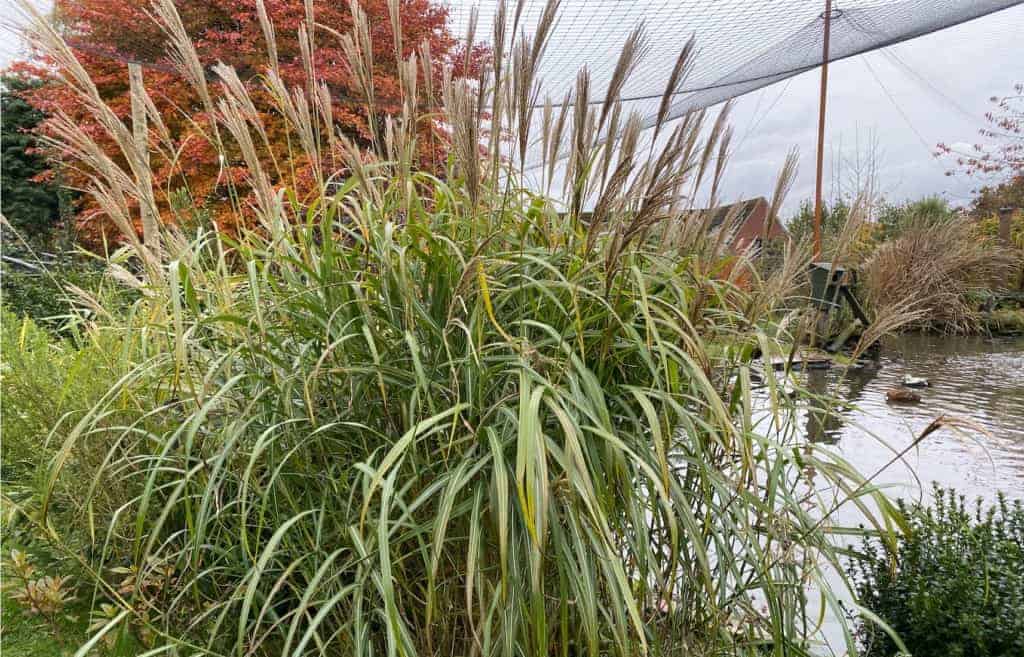
Some of the simplest plantings can look most effective; repetition is a trick frequently used by landscapers. Areas of Carex species alongside the shorter grasses will give welcome cover for nesting. Taller still, the Miscanthus family can make an effective backdrop. In large areas you could go for Phragmites, though this is also tall and invasive. Alternatively, many wildfowl keepers prefer to keep their birds in a garden setting, where planting is a matter of taste for the gardener. Pampas grass can look fantastic but ultimately it requires a lot of maintenance. The leaves are finely serrated and stronger than strimmer line, gloves are definitely required for cutting back. Most ornamental grasses and ferns will make a superb display if given time to establish.
Ideally the enclosure should be planted and established before birds are introduced. Should you have to plant after the arrival of your birds, then your plants and flowers must be protected, until they are fully established. 25 mm wire netting, 50 cm high, placed around each plant will provide this protection and prevent the plants being destroyed by the inmates. The construction and layout of the pen should be attractive but practical. Will you be able to negotiate a barrow easily, or eventually bring in a digger without flattening a prize specimen? The aim should be to provide adequate cover for nesting birds, shade in the summer and protection in the winter. Remember that too much planting will obscure your birds!
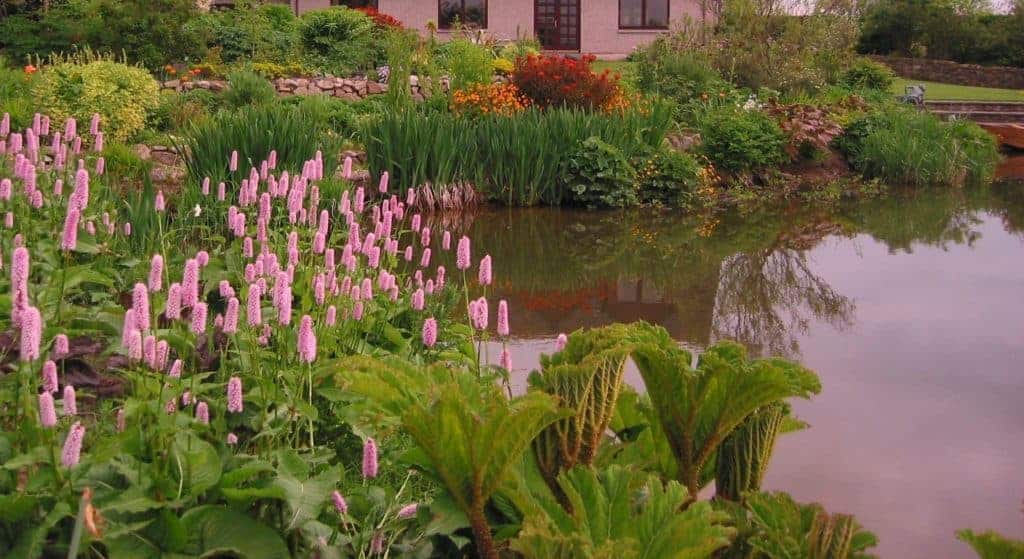
There are very few plants that your geese and ducks won’t eat, in particular they enjoy new growth, but some plants stand up to waterfowl better than others once well established. You may dream of an Impressionist’s garden, rich with water lilies, but their buds appear to be a delicacy for most species. Plants are as important as the water itself; providing food, harbouring insects and aquatic life, giving valuable shelter, offering cover from predators and allowing sites for nesting and protection for ducklings in their first few weeks. Newly sprouted growth is the most nutritious. Seed trays of sprouted seeds are a valuable way to supplement bird diets.
In any planting scheme you could aim to create a plant profile using species four basic categories:
- Trees and shrubs
- Marginal plants
- Submerged plants
- Free-floating plants
Trees and shrubs should be planted back from the water’s edge to provide shelter from the prevailing wind and useful breaks from sun, frost or snow. Small trees and bushes near the water’s edge may also provide a frost free spot on the water and a supply of invertebrates to the pond but excessive shading and leaf litter will affect the water quality so should be avoided. Here, evergreens are perhaps most suitable, the many dwarf varieties are ideal, being slow growing and so not invasive.
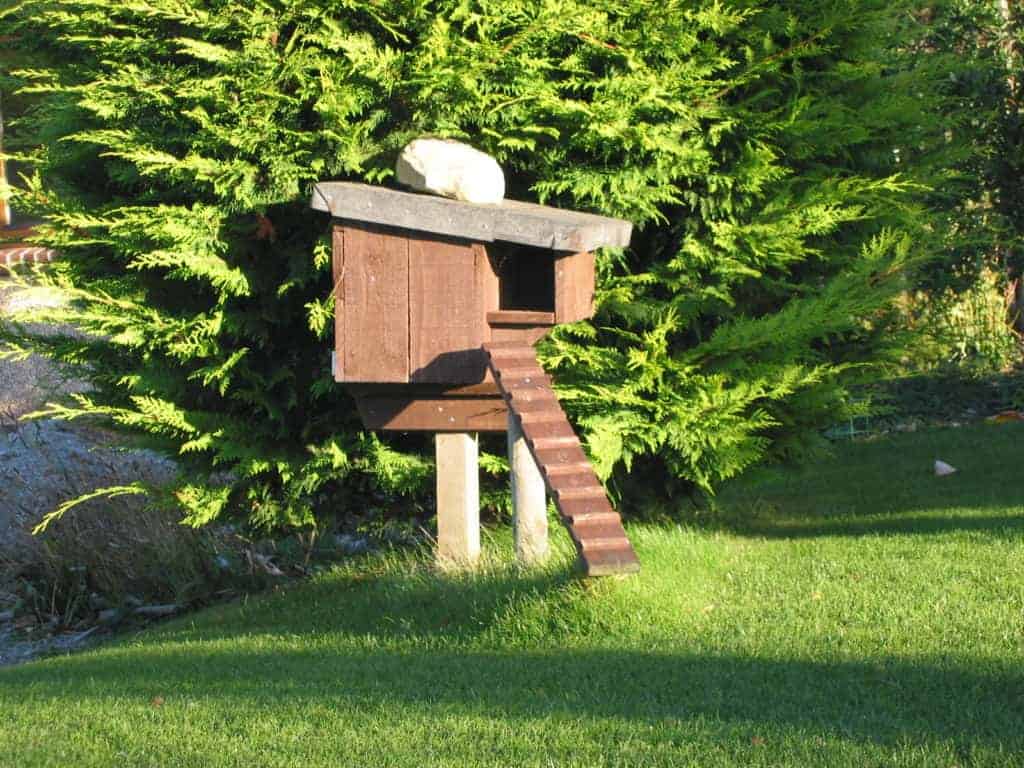
Leaf litter and dense cover bring both benefits and disadvantages. The natural cycle of growth, senescence and decomposition can cause a problem with water quality. Many ornamental wildfowl such as mergansers pick up small sticks and can swallow them, with disastrous consequences. After pruning it is imperative to collect every scrap of brash if these species are kept. Rough areas can harbour vermin, so these points should be considered.
Marginal plants tend to tolerate fluctuating water levels. They help stop bank erosion, provide cover for birds, attract invertebrates and aid the survival of ducklings. Sedges, reeds and flags are all good marginal plants that provide an ideal habitat for both ducks and their insect food. These do need to be well established before introducing ducks unless you cover the roots with mesh or erect a temporary protective fence.
Submerged plants and free floating plants will only survive if your waterfowl stocking density is very low. These will encourage invertebrates and provide an important source of food for diving ducks. By serving as oxygenators, they can also help improve water quality and the health of the pond.
Mare’s tail is an excellent choice of oxygenator and can be planted as a marginal or submerged plant, not to be confused with horsetail which is a very pernicious weed. For variation you might include water crowfoot, which bears attractive white buttercup flowers and foliage above and below water.
Free floating plants, such as duck weed, are an important food but they can cause problems by covering the pond completely. Duckweed floats on or just below the surface of the water, providing cover for the fry of many species and an important food source which is very high in protein. They can also help with nitrate removal, so act as water purifiers, and in summer a decent coverage will help reduce water evaporation. A second popular free floating plant to add interest is frogbit, which floats on the surface looking like a tiny water lily. Frogbit hibernates at the bottom of the pond in the winter but in the summer re-surfaces to provide shelter for tadpoles, small fish and larvae, if any have survived the foraging waterfowl. It is worthwhile having a protected separate pool to grow on floating plants for youngsters.
